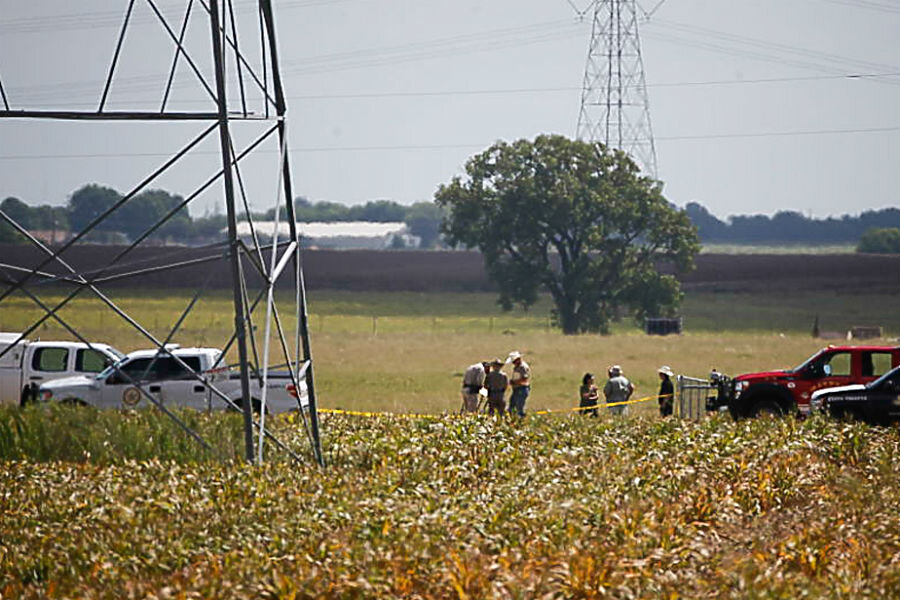Fatal hot air balloon crash near Austin, Texas
Loading...
| Lockhart, Texas
A hot air balloon carrying at least 16 people caught on fire and crashed in central Texas on Saturday, causing what authorities described as a "significant loss of life."
Erik Grosof with the National Transportation Safety Board would not provide an exact number of how many people died. The crash happened at about 7:40 a.m. in a pasture near Lockhart, and Lynn Lunsford with the Federal Aviation Administration said earlier that the balloon was carrying at least 16 people.
If there are 16 fatalities, it would be an unprecedented death toll for a hot air balloon crash in the United States, CNN reports. The highest number of deaths in a single hot air balloon crash in the country before Saturday was six, in a 1993 accident in Colorado, according to the NTSB.
Authorities have not said where the hot air balloon was based out of or which company was flying it, though Caldwell County Sheriff Daniel C. Law told The Associated Press that it's the kind of situation where people can walk up and buy a ticket, unlike an airplane, which would have a list of names.
The land near the crash site is mostly farmland, with corn crops and grazing cattle. Cutting through that farmland is a row of massive high-capacity transmission lines about 4 to 5 stories tall. The site of the crash appears to be right below the overhead lines, though authorities haven't provided further details about what happened.
Margaret Wylie lives about a quarter-mile from the crash site and told The Associated Press that she was letting her dog out Saturday morning when she heard a "pop, pop, pop."
"I looked around and it was like a fireball going up," she said, noting that the fireball was located under large power lines and almost high enough to reach the bottom of them.
Wylie, who called 911, said the weather seemed clear and that she frequently sees hot air balloons in the area.
Troy Bradley, a hot air balloon pilot in New Mexico, told the Austin Statesman that the area between Austin and San Antonio is a common place to fly balloons.
Mr. Bradley said it’s unlikely that the balloon could have caught on fire by itself; rather, he guessed that power lines struck the balloon basket and perhaps ignited fuel. High voltage power lines are very near the scene where the hot air balloon carrying 16 caught fire and crashed in a hay field Saturday.
Grosof said at a news conference that the NTSB has deemed it a major accident and a full-bore investigation will begin Sunday when more federal officials arrive.
Robert Sumwalt, who will head the NTSB's crash investigation team, said he was studying the board's recommendations to the FAA based on previous hot air balloon crashes. Sumwalt, who spoke to the AP while waiting to board a plane to Texas, said the team was still trying to gather basic information about the accident.
Texas Gov. Greg Abbott asked in a statement that "all of Texas to join us in praying for those lost."
Lockhart is about 30 miles south of Austin.







